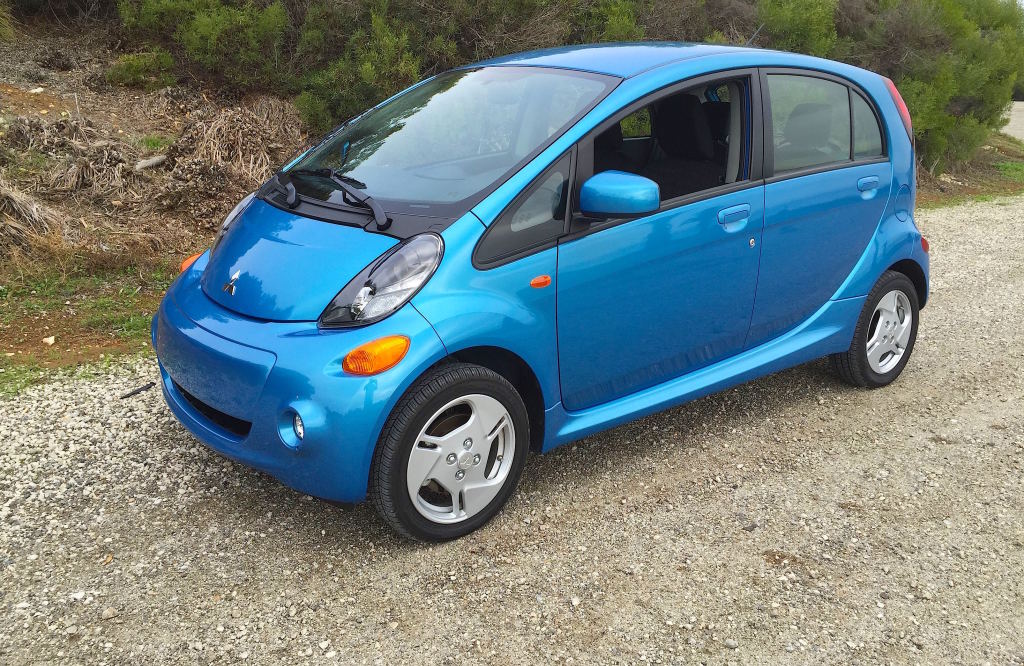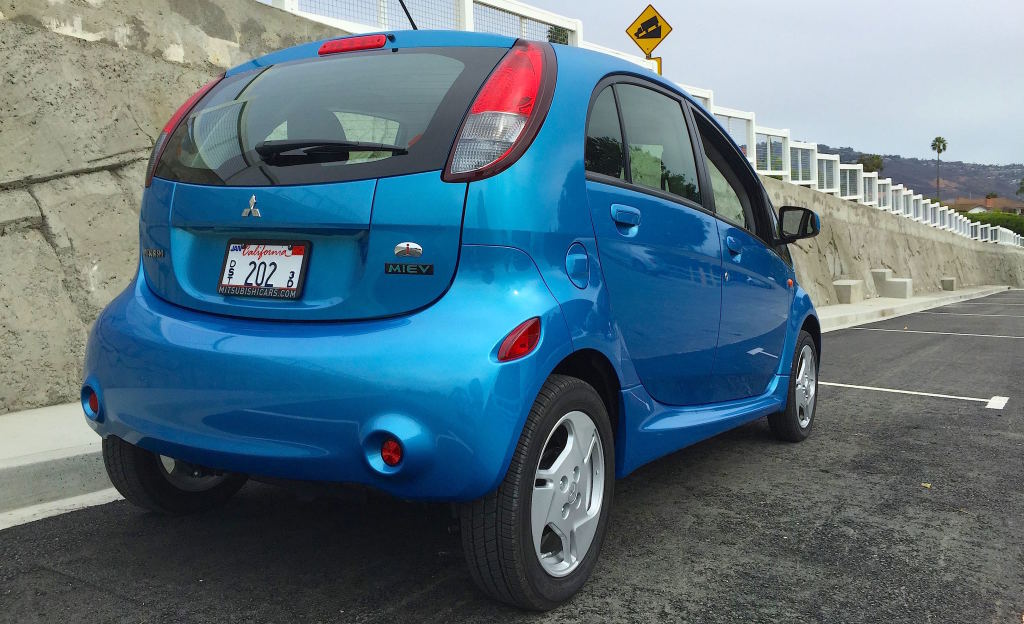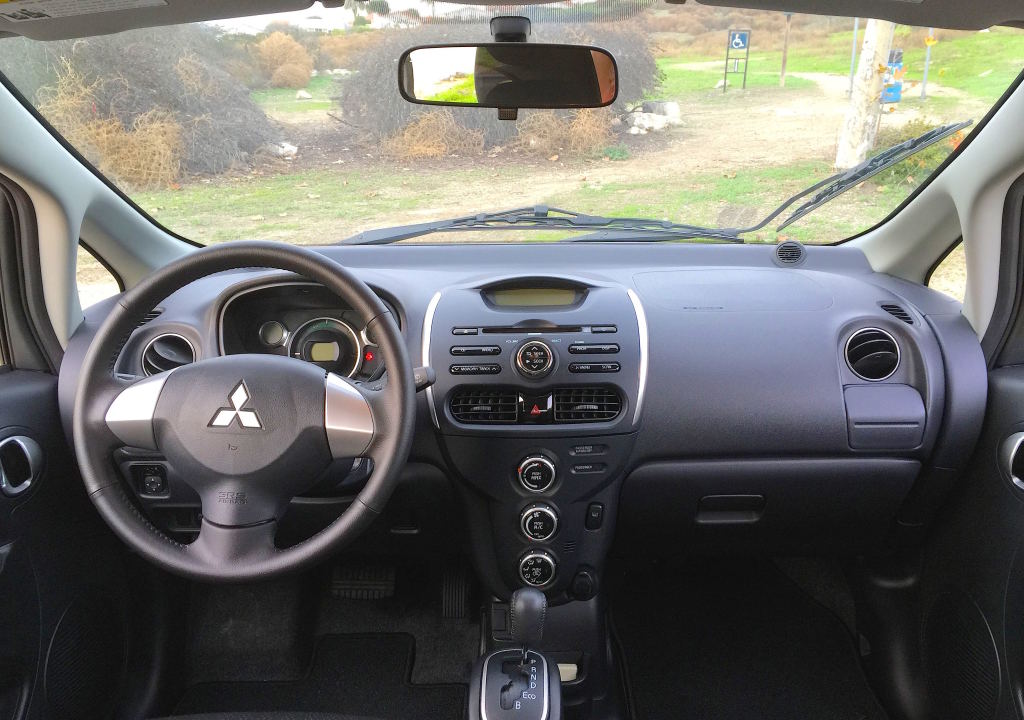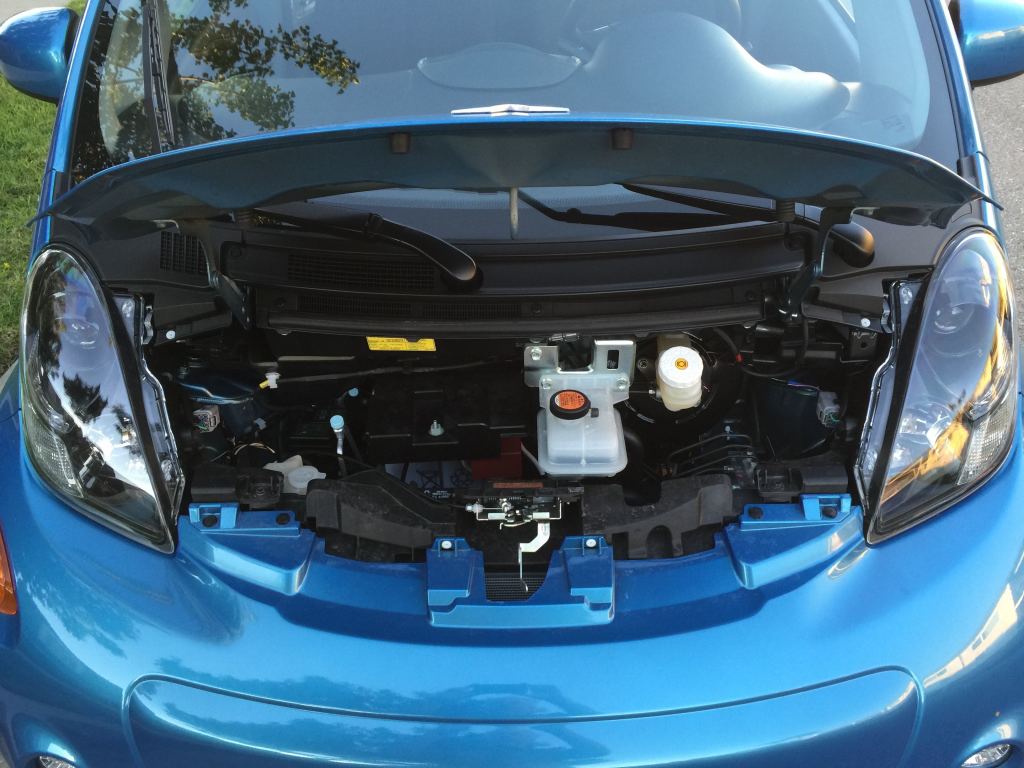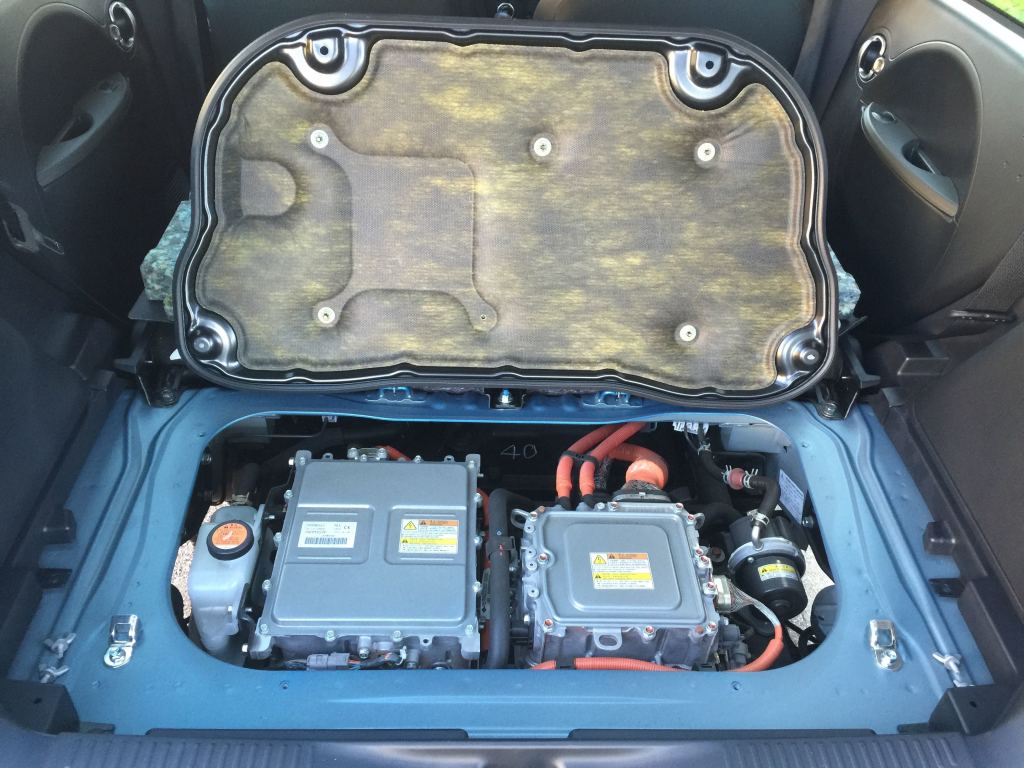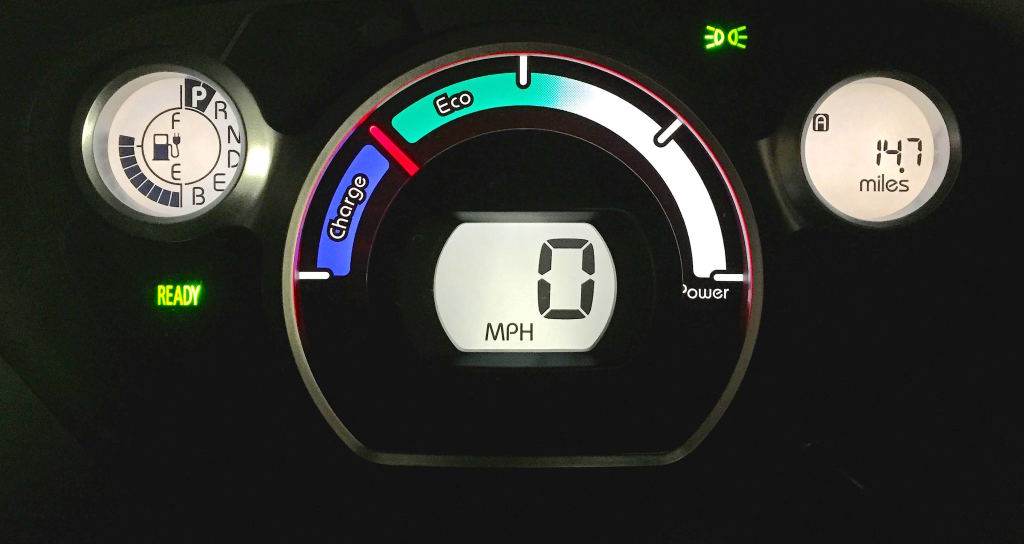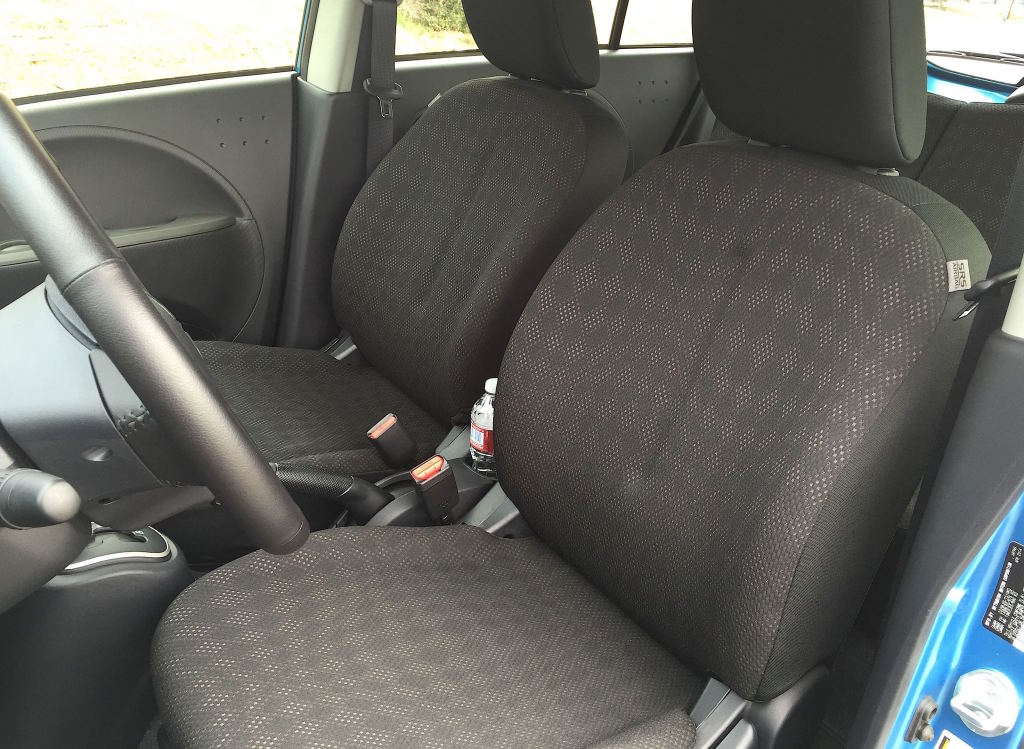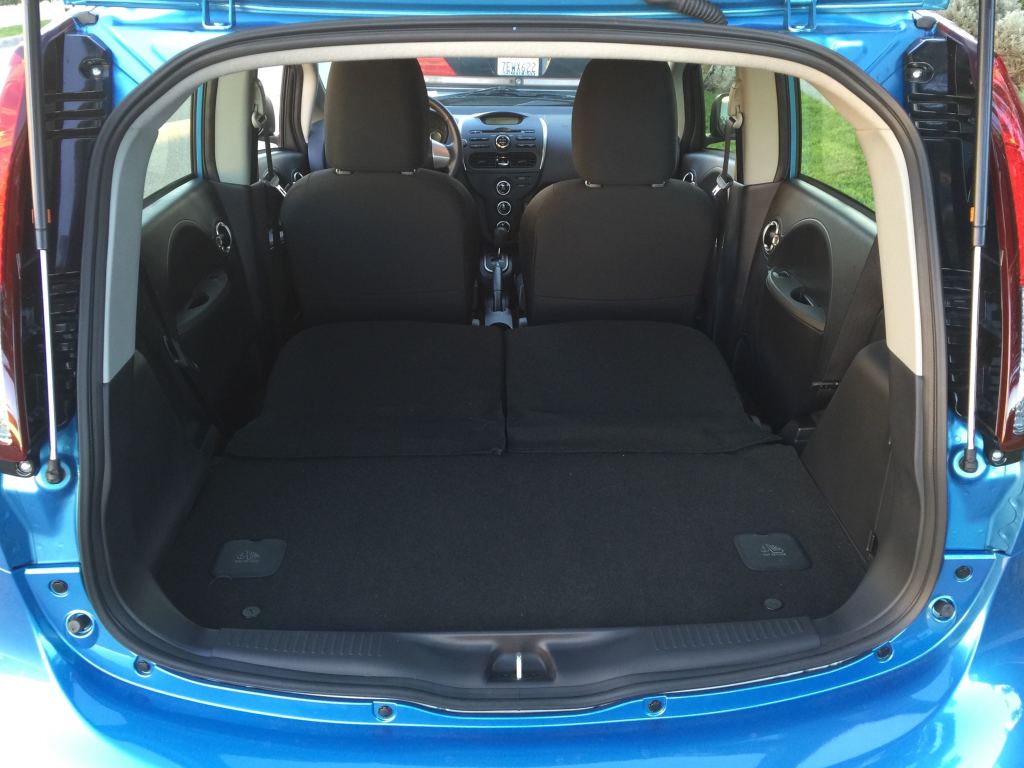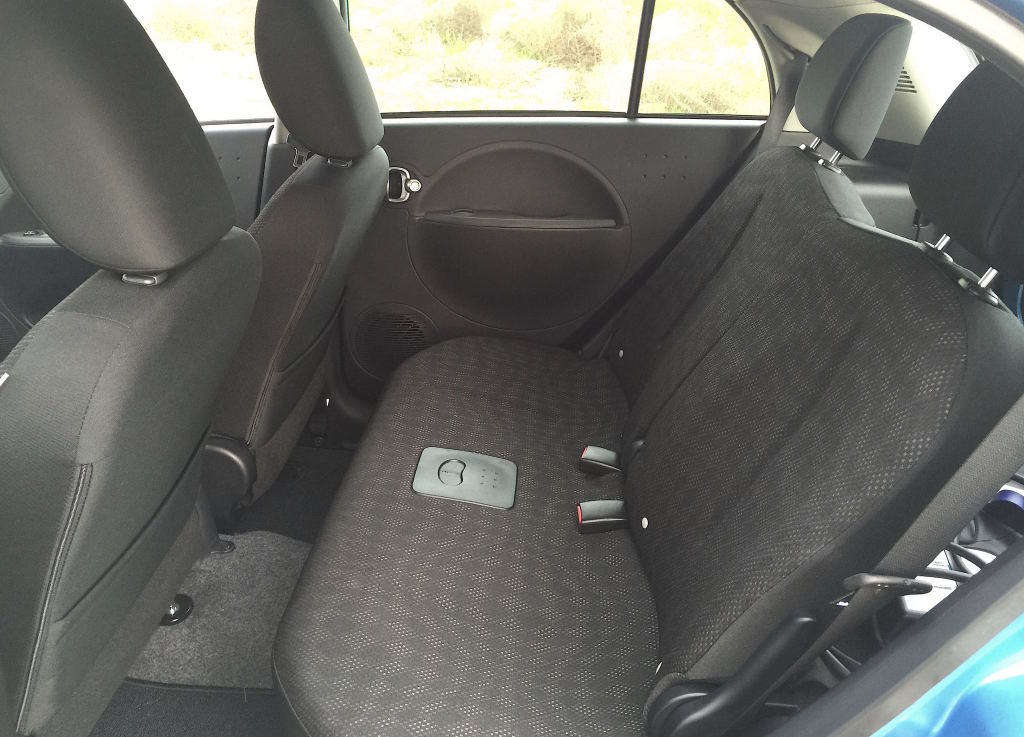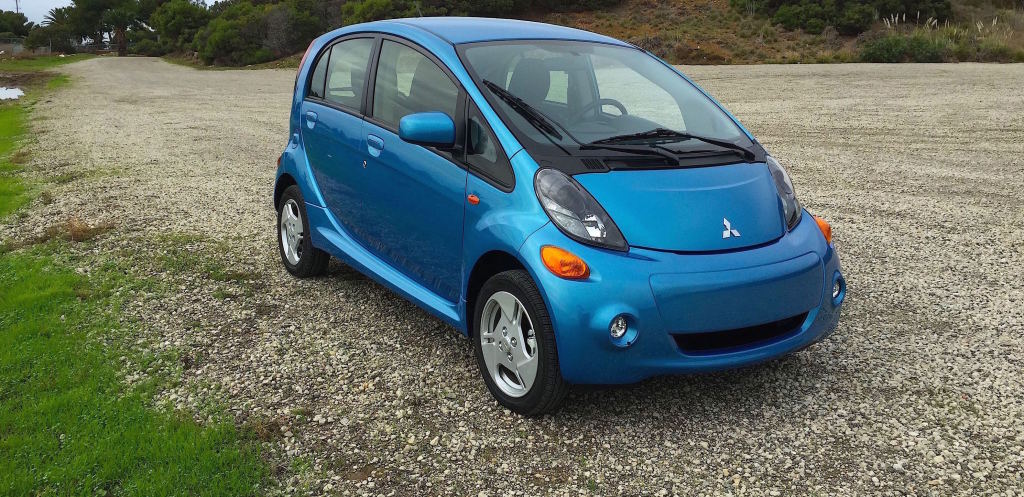By Steve & Tami Laser
With its polarizing styling and petite dimensions, the Mitsubishi i-MiEV stands out from other cars on the road. It also looks dramatically different compared to the Electric Vehicles (EVs) we’ve tested including the Nissan Leaf and BMW i3.
The i-MiEV was introduced to the U.S. market more than two years ago, yet as a low-volume import it continues to turn heads wherever it goes. Best of all, Mitsubishi says i-MiEV is “America’s most affordable Electric Vehicle.” That makes it a very attractive proposition for budget-mined shoppers who have been waiting for EV prices to come down.
Before we dive into the details, lets cut to the bottom line. The 2014 i-MiEV has a Manufacturer’s Suggested Retail Price (MSRP) of $22,995. With destination and handling, our test car’s list price was a remarkably affordable $23,845.
There’s a $7,500 Federal EV tax credit (subject to rules and availability) and an additional $2,500 EV incentive for California residents (see the California Clean Vehicle Rebate Project for rules and eligibility) potentially dropping the net cost to $12,995. For a complete list of federal and local tax credits and incentives, visit pluginamerica.com or goelectricdrive.com.
The radical styling of the Mitsubishi i was originally unveiled as a show car way back in 2003. It went on sale three years later in the Japanese-market Kei class of cars, also called mini-vehicles. These are limited in overall length and width yet height restrictions are more generous. Thus it’s possible to have a car with a tiny footprint yet an upright seating position and tall roof make it feel spacious inside. The original i employed a 3-cylinder 660cc gas engine mounted ahead of the rear axle and driving the rear wheels.
A pure electric version went on sale in 2009 with the name changed to i-MiEV (Mitsubishi innovative Electric Vehicle). The i-MiEV came to America in late 2011 as a 2012 model. In order to meet U.S. crash-tests, our i-MiEV is about eight inches longer and four inches wider than its Kei class counterpart. Larger bumpers change the looks of the original yet the added impact protection in this small car is welcome.
In addition to the low price of admission, operating costs for an i-MiEV should be considerably lower than a conventional small car since it will never need a drop of gasoline. Power is supplied by a 49 kW (66 horsepower) AC synchronous electric motor, an 88 cell, 330V lithium-ion battery pack and a single fixed reduction gear transmission.
Compared to a gas engine, an electric motor can produce peak torque almost instantly when starting out from a standstill. That gives i-MiEV the ability to keep up with traffic quite easily with the transmission in the “D” mode. Selecting the “ECO” position slows things down a bit to help improve driving range. The “B” position increases regenerative braking capturing normally wasted energy to help change the batteries.
How far will it go between charges? The i-MiEV’s “real world” EPA-rated range is 62 miles, yet the car is rated at 98 miles according to the EPA’s LA4 driving cycle. Since we live at 1,200 feet above sea level, our driving range in the test car was reduced to about 40 miles. It takes quite a bit of juice to climb the steep hills in our neighborhood. With the weight of the powertrain in the back of the car, the i-MiEV is easy to drive. The steering is light, there’s good outward visibility with the huge panoramic windshield, and it’s easy to park in spaces that larger cars fear to tread.
We live in a condo complex without the ability to recharge a test car on site. So we took advantage of the independent ChargePoint network stations. The cost per charge varies by location from “free” for the first 30 minutes to a modest amount for longer durations. We drove the car farther than we should have one evening resulting in a six-hour charge the next day – yet the cost was only $5.00.
Most owners can charge i-MiEV at home using a conventional 120V “Level 1” 8A/12A portable charging cable that plugs into a standard wall outlet. This method takes about 22 hours for a full charge. A 240V/15A “Level 2” charging system that requires additional extra-cost equipment for home installation results in an estimated charge time of seven hours. Using a public station with a CHAdeMO “Level 3” DC quick charge cuts the time to less than 30 minutes for an 80 percent charge.
Mitsubishi offers i-MiEV in a single ES trim level for 2014. Standard safety features include six airbags, anti-lock brakes with Electronic Brake-force Distribution, Brake Assist, Active Stability Control with Traction Control and an Approaching Vehicle Audible System to help alert pedestrians to this super-quiet electric car.
The list of i-MiEV’s comfort and convenience features includes an electric manual air-conditioner and cabin heater, heated front seats, leather-wrapped steering wheel, six-speaker audio system, heated outside mirrors, front fog lights and alloy wheels. Also included is a MiEV remote system that allows the battery pack to be charged via a timer. The driver can also pre-activate the heater or air conditioner to make the cabin comfortable before driving.
Features like a backup camera, big display screen or a navigation system that would drive up the price are not available in an effort to help maintain affordability. So if you’re in the market for a reasonably priced EV, be sure to put the Mitsubishi i-MiEV on your shopping list.
2014 Mitsubishi i-MiEV press fleet vehicle provided by Mitsubishi Motors North America. Vehicle specifications, features and prices are subject to change without notice.
Story, photos and videos © 2014 CarNichiWa.com
